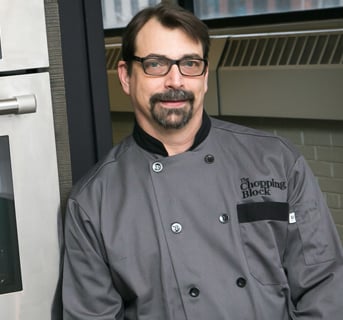Ah, spring. Isn’t it funny how happy everyone who has made it through a long winter becomes when it turns 50 degrees and above? I know I'm in that group. Now I need to find the time to go and hit some golf balls.
In the first part of this Back to the Basics series, I took you through making a rich beef stock using the bones from a standing rib roast I made over the holidays. In part two, we took that wonderful stock and turned it into an equally lovely Espagnole Sauce. Today, I am going to take equal parts of that wonderful stock and lovely sauce and create a vivacious demi-glace.
Demi-glace is a a highly concentrated reduced rich brown sauce that like Espagnole is delicious by itself, but most often it is used as a base for other sauces. It literally translates as half-glaze. For this version, I actually went back to my culinary school notes from all those years ago.
Demi-Glace
4 cups of brown stock
4 cups of Espagnole
In a Dutch oven, combine the stock and sauce and bring to just under a boil on medium-high heat. Reduce the heat to a slow simmer and move the pot to the edge of the burner so that the simmer is slowly rolling on the side.
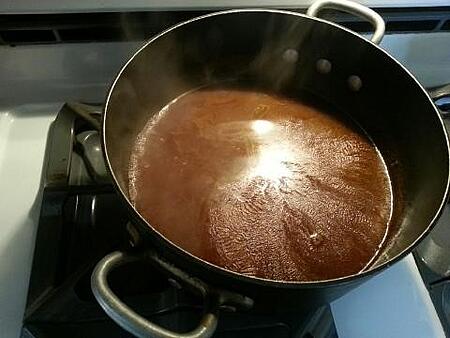
This helps clear the sauce of of impurities and move them to the side for easy removal.
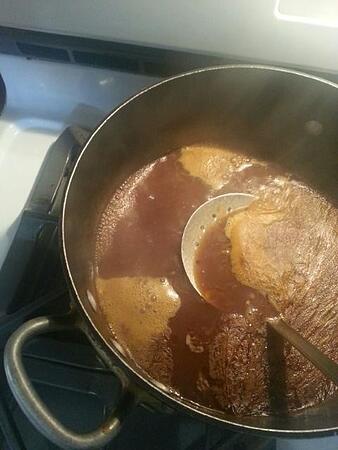
After the sauce has reduced by about half, strain the sauce through a fine strainer to a smaller sauce pan and continue to reduce the sauce in the same manner until it has reduced by half again.
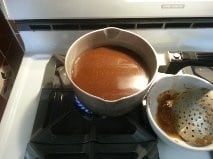
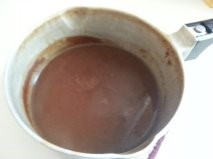
This straining and moving to a smaller sauce pan makes for a cleaner sauce and greater viscosity as well as keeping the color more true.
At this point, it is time for a final straining. I used a strainer with cheesecloth that has been rinsed well.
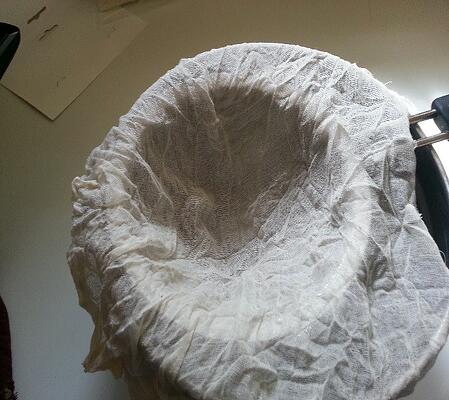
To begin with, I rock the sauce back and forth and then begin to wring the sauce through the cheesecloth until I have extracted all the sauce through cleanly.
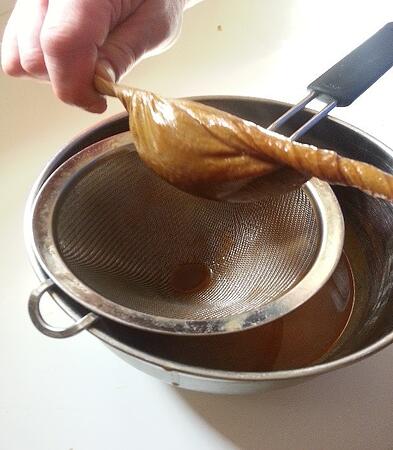
A properly prepared demi-glace should have some key characteristics:
- The flavor should be full and rich.
- The color should be deep and brown, as well as very shiny and have a smooth appearance.
- It should have a great body that can easily coat the back of a spoon and when you drag your fingertip through it leaves a defined trail (that is called nappe).
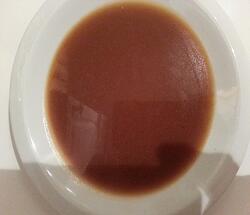 Espagnole Sauce
Espagnole Sauce
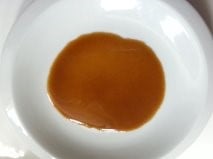 Demi-Glace
Demi-GlaceInitially, I was going to end this series with demi-glace, but it would seem to be a shame not to use this sauce, so the next installment will be a meal that is based on this batch of demi-glace. I think I will go back to Escoffier for that, but we will see next month. Until then, bon appetit!


